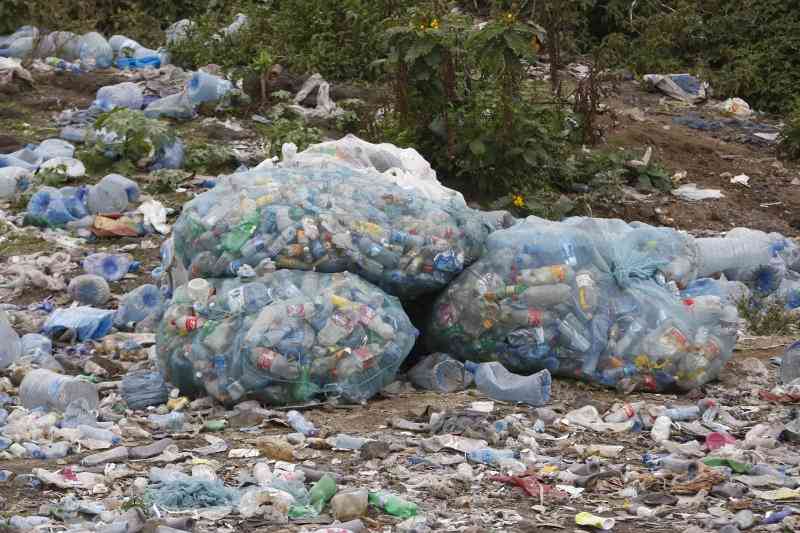 |
|
Members of Nyandera Green Valley Conservation Group. [Photo: Ayoki Onyango/ Standard] |
Siaya, Kenya: A community in Bondo District, Siaya County, has resorted to tree farming to curb soil erosion in order to promote food production.
Nyandera Green Valley Conservation Group plans to grow two million seedlings of various tree species in the next two years.
The nursery, which is a few metres from Ajigo Market in Bondo, has over 500,000 seedlings with over 200 fruit species.
“Some of the fruit species in the nursery include mangoes, papayas, avocados, guavas, lemons, oranges, java plum, passion and moringa,” says Phanuel Oballa, the group’s co-ordinator.
Among the tree species in the nursery is Jatropha, which is being considered for renewable energy for rural development and to mitigate global warming, says Dr Oballa.
The co-ordinator says the other tree species will meet the region’s need for posts, poles and logs, which are in inadequate supply. These products are currently procured from Kondele in Kisumu.
“Individuals as well as institutions spend a lot of cash buying these products and farmers can tap that money right at home. A three-year-old blue gum costs Sh100 at the farm gate, so a farmer with 1,000 trees on half a hectare is assured of Sh100,000,” says Oballa.
The group has also focused on species that will promote soil enrichment, provide fodder and protect the wetlands.
“Our concern for the wetlands comes from the fact that we live in a high water-deficit area,” he adds.
Members whose farms border stream valleys have taken up species such as bamboo trees.
Residents and non-members interested in incorporating trees on their farms get seedlings at a subsidised cost.
The group has also initiated a schools outreach strategy to introduce pupils to the tree-planting culture.
In addition, they have set aside three hectares on which rare and endangered plant species are being planted for posterity to educate the public, enrich species diversity and serve as reference collections for research.
The group is working in close partnership with the National Environmental Management Authority, Kenya Forestry Research Institute, National Museums of Kenya, Nile Basin Initiative, Vanilla-Jatropha Development Foundation and Kenya Agricultural Research Institute among others.
Oballa says since Siaya is not endowed with natural or planted forests to supply basic products, the most reliable way of meeting the demand is through adoption and adaptation of agroforestry technologies.
Stay informed. Subscribe to our newsletter
“The future of forestry is in farmlands, where farmers will invest in trees to produce enough for domestic needs and markets and also to create cleaner and healthy environments,” notes Oballa.
The group has also urged the relevant authorities to ensure that farmers who invest in tree farming reap maximum profits.
“Our only prayer is that a time should come when farmers who invest in trees, like many other agricultural crops, will process and transport their products without too much trouble and harassment.
Currently, the burning of charcoal and processing of timber, and transporting these to the market is open to abuse hence serving as a disincentive for farmers,” says Oballa.
The successful entrenchment of a tree-planting culture, the group believes, will also create jobs for many unemployed youths.
 The Standard Group Plc is a
multi-media organization with investments in media platforms spanning newspaper
print operations, television, radio broadcasting, digital and online services. The
Standard Group is recognized as a leading multi-media house in Kenya with a key
influence in matters of national and international interest.
The Standard Group Plc is a
multi-media organization with investments in media platforms spanning newspaper
print operations, television, radio broadcasting, digital and online services. The
Standard Group is recognized as a leading multi-media house in Kenya with a key
influence in matters of national and international interest.
 The Standard Group Plc is a
multi-media organization with investments in media platforms spanning newspaper
print operations, television, radio broadcasting, digital and online services. The
Standard Group is recognized as a leading multi-media house in Kenya with a key
influence in matters of national and international interest.
The Standard Group Plc is a
multi-media organization with investments in media platforms spanning newspaper
print operations, television, radio broadcasting, digital and online services. The
Standard Group is recognized as a leading multi-media house in Kenya with a key
influence in matters of national and international interest.










